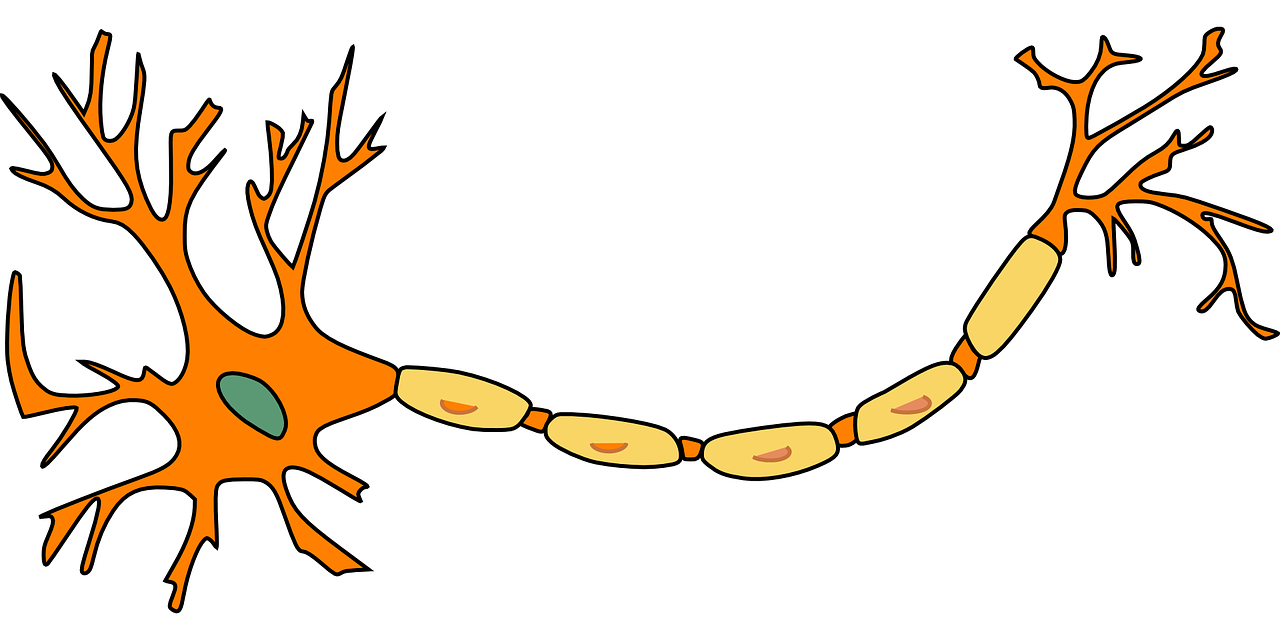The Brain & Spinal Cord
The study that involved a man who was impaled in the frontal lobe with a rod, suffering notable personality changes and increased trouble functioning in society.
The Study of Phineas Gage
A type of bias that is formed upon only finding information that supports a preconception and disregarding information that does not support it.
Confirmation Bias
"A persistent pattern of inattention and/or hyperactivity-impulsivity that interferes with functioning or development" is one of the diagnostic criteria for this disorder.
Attention-Deficit/Hyperactivity Disorder
Known for his work in classical conditioning, this psychologist is famous for training dogs to salivate upon the presentation of a stimulus.
Ivan Pavlov

The portion of a nerve cell that carries nerve impulses away from the cell body.
Axon
The experiment in which people were placed into the role of a prisoner or guard, simulating a prison-like environment. The behavior of the guards seemingly became cruel and tyrannical, while the "prisoners" developed habits that seemed congruent with genuine prisoner behavior. This may have displayed dynamics in behavior depending on position in a hierarchy.
The Stanford Prison Experiment
Occurs in research when participants are not told the entire truth about the purpose of a study.
Deception
"Marked fear or anxiety about one or more social situations in which the individual is exposed to possible scrutiny by others. Examples include social interactions, being observed, and performing in front of others."
One of the diagnostic criteria for this disorder.
Social Anxiety Disorder
A psychologist and behaviorist who was famous for his work with operant conditioning-- focusing on reinforcement and its effect on observable behavior.
B.F. Skinner

The portion of a nerve cell that transmits received neural impulses into the cell body.
Dendrites
An experiment that researched the effect of authority on obedience. Participants were instructed to administer controlled shocks to "other participants" (confederates) as punishment for getting a task wrong. A surprisingly large proportion of individuals administering the shock allowed the voltage to reach a lethal level, as they were simply heeding the instruction of the authoritative figure.
The Milgram Obedience Experiment
Subconscious feelings, attitudes, prejudices, and stereotypes that an individual has developed into a bias due to prior influences. Deep-rooted and automatic.
Implicit Bias
"Experiences of unreality, detachment, or being an outside observer with respect to one's thoughts, feelings, sensations, body, or actions" is one of the two main symptoms of DP/DR as expressed in the DSM-5 TR.
Depersonalization
This psychologist studied attachment, using studies with baby monkeys to research whether attachment was formed based on availability of food alone. Despite the wire-mesh "mother" monkey having food, the baby monkey stayed latched on to the cloth "mother" for as long as it could, only leaning over to feed from the wire mom.
Albert Bandura
The type of nervous system that is associated with increased biological arousal, such as dialated eyes and increased heart rate. Often associated with a fearful stimuli.
Sympathetic Nervous System
A study that researched the extent to which an individual would conform to a group who was blatantly incorrect about a prompt. The researcher presented a series of lines to the participants and asked which was the longest. The confederates all or mostly answered with a clearly incorrect option, influencing the participant's tendency to agree with the social consensus even if it is blatantly incorrect.
The Solomon Asch Line Study
The hopelessness and resignation learned when a human or animal perceives no control over a repeated bad event.
Learned Helplessness
"Recurrent periods of an irrepressible need to sleep, lapsing into sleep, or napping occuring within the same day" is a symptom of this sleep disorder.
Narcolepsy
He is famous for his "hierarchy of needs," a theory of psychological health built upon fulfilling innate human needs arranged in a pyramid display.
Abraham Maslow
Another name for a programmed cell death.
Apoptosis
An experiment done to measure the type of attachment a baby exhibits, based on their reaction to their primary caregiver leaving the room and entering again. Includes four main types of attachment: secure, anxious, avoidant, and disorganized.
The Mary Ainsworth Strange Situation Study
A cognitive rule that judges the likelihood of things in terms of their availability in memory. The instance comes readily to mind, making it feel more commonplace than it actually might be.
Availability Heuristic
"Pleasure, gratification, or relief when setting fires or when witnessing or participating in their aftermath" is a symptom of this disorder in the DSM-5 TR.
Pyromania
An American child psychologist who is known for his theory on psychosocial development. He claimed that personality developed over a lifetime, and that there was a struggle at each stage. The first stage, for example, is from birth to 18 months of age: trust vs mistrust.
Erik Erikson